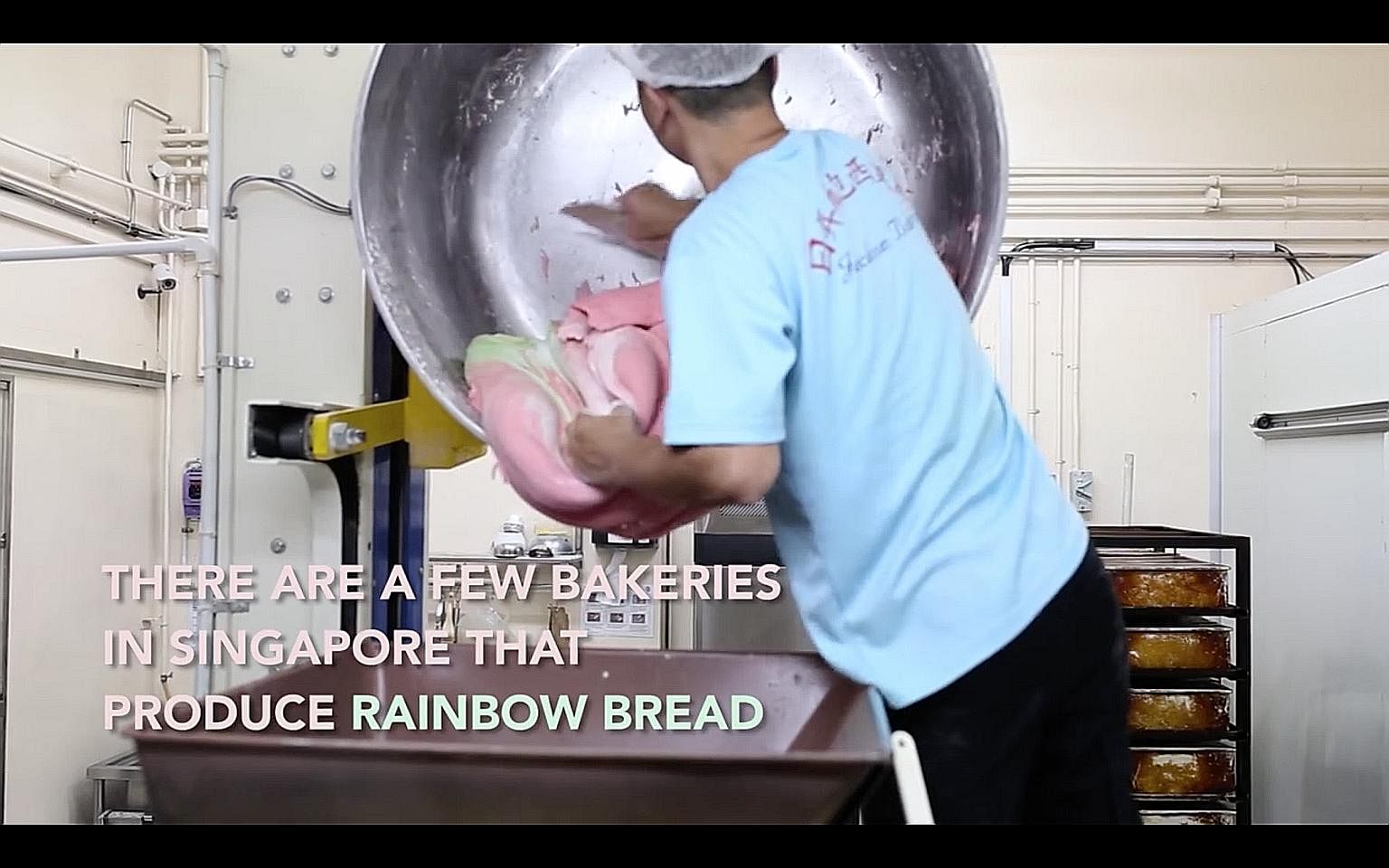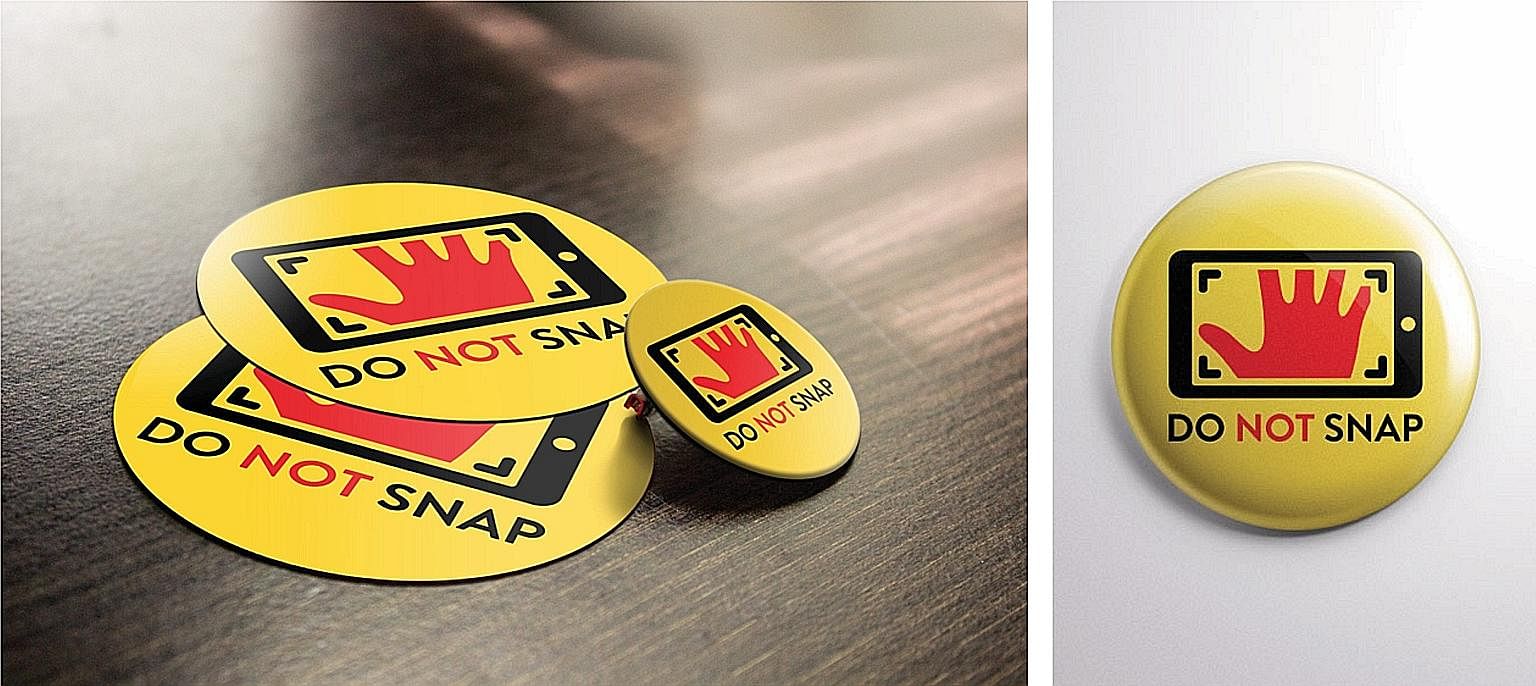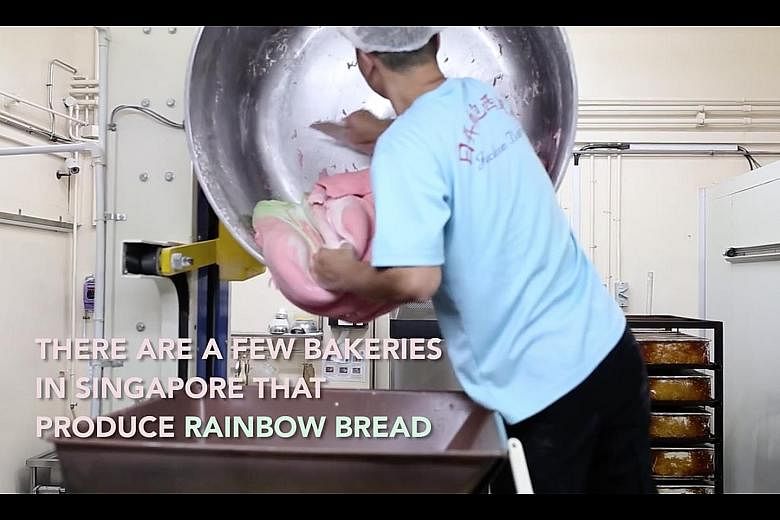GRANDFATHER STORIES
It's a familiar treat to many Singaporeans - ice cream wrapped in a slice of pink-and-green bread bought from a street vendor for quick relief from sweltering heat.
If you ever wondered where such pretty bread comes from, the aptly named Our Grandfather Story (www.facebook.com/ourgrandfatherstory) has the answer.
The local content production outfit went behind the scenes at a bakery and captured the process in a 90-second clip that has been viewed more than 150,000 times since it was posted last Wednesday.
The nascent site, which went up earlier this month, already has more than 3,000 "likes". Not bad for what began as a school assignment for four undergraduates at the Nanyang Technological University.
Mr Ng Kai Yuan, 23, told The Sunday Times that the project, meant for a photojournalism class, was to document Singapore's traditions and heritage through strong visual storytelling. The team focused on creating bite-size stories that would be compelling enough for a younger audience notoriously short on attention span.


-
NOTABLE TRENDS
#BillyBushMadeMeDoIt: The hashtag trended after Republican presidential nominee Donald Trump's lewd remarks were made public. In an interview, Mr Trump's wife Melania said he might have been egged on by TV host Billy Bush to say such things.
#STixtoWTAFinals: The Straits Times gave away three pairs of tickets to the BNP Paribas WTA Finals Singapore over three days. Twitter users could grab seats to watch world-class tennis by taking part in a scavenger hunt.
Arshad Khan: A young Pakistani tea-seller with intense blue eyes made Internet users in Pakistan and India swoon, after a picture of him was posted by a local photographer on Instagram.
But the team does not feel beholden to one format.
"Some stories will have either long-form or short-form videos, photo essays, and what we would classify as new media - 360-degree virtual reality photos, GIFs and so on," Mr Ng said.
A 360-degree photo of Rochor Centre, for instance, gives users an opportunity to visit the area without leaving one's home.
Some of the other stories told by Our Grandfather Story are about a Malaysian confinement nanny's experience working in Singapore, roadside barbers, heritage areas and the local coffee culture.
Mr Ng said the project is still in its initial stages, and does not rule out making it a commercial enterprise, should the opportunity arise.
Our Grandfather Story is a refreshing change in the local social media landscape, where there is a preponderance of Facebook pages and Twitter accounts that try to stir up feelings of xenophobia and racism in a bid to draw website traffic for financial gain.
Said Mr Ng: "We hope that we will be able to stick to our intent and our vision, and not be sucked into the black hole of click baiting, which is to serve up sensational content whose main purpose is to draw visitors to a particular webpage."
PRIVACY BADGE
Can an item as simple as a badge help protect your privacy?
That is what security software company AVG hopes to achieve with its latest project titled Do Not Snap.
AVG's innovation arm has created an algorithm which promises to automatically blur out the images of people who wear the particular badge on their clothes.
The reasoning behind this is the fact that not everyone wants to have images of themselves, especially unflattering ones, floating in cyberspace.
More than 1.8 billion photos are uploaded online every day.
In a blog post, AVG program manager Roy Averink said the badges were made in response to the recent announcement by message service Snapchat on its launch of an upcoming line of video-catching sunglasses. These sunglasses, called "Spectacles", have an integrated video camera which allows users to "Snap" what they see over Bluetooth or Wi-Fi.
If the solution works, people who are wearing the badges but are inadvertently captured in the Snaps would be blurred out.
"Snapchat is thought of as the most privacy-friendly social medium because of the way posts disappear, but with Spectacles, they now want to preserve our memories. This has huge privacy implications," said Mr Averink.
"What if you are in someone else's (video) but don't want it shared? What can you do?"
He cited a recent example in Austria, where an 18-year-old woman sued her own parents for posting 500 pictures of her without her permission.
"They knew no shame and no limit and didn't care whether it was a picture of me sitting on the toilet. Every stage of my life was photographed and then made public," she told a local newspaper.
But the badge is by no means a magic privacy protector. It will need the buy-in of social media giants which would need to integrate AVG's codes into their platforms. And so far, there's been no word that any of them would do so.
PAY TO POST
The app's slogan is: "Being rich is boring when nobody sees you." But being seen is not cheap.
Making waves on social media is the Rich Kids app, fashioned after the popular Rich Kids Of Instagram account, which has almost 340,000 followers.
The app, currently available only in the iTunes store, is free to download, and allows users, like with the Instagram account, to see what the children of wealthy parents get up to on their yachts and private jets.
Posting your photos through the app, however, is another matter entirely. It would cost users a fee of US$1,000 (S$1,400) a month.
Why would people even pay for this?
The website gives three reasons:
•online exclusivity,
•finding a new audience,
•and that a third of the membership fee will be donated to charities "helping kids living in poverty to study".
Reasons enough for the wealthy young to part with their parents' money?
After all, it's not even the silliest "rich people" app ever made.
In 2008, for instance, a developer named Armin Heinrich released an app called I Am Rich.
It cost US$999.99 and, when pressed, displayed the mantra: "I am rich, I deserve it, I am good, healthy and successful."
It was taken off the app store a day later without any explanation from Apple, but not before eight people had bought it.


